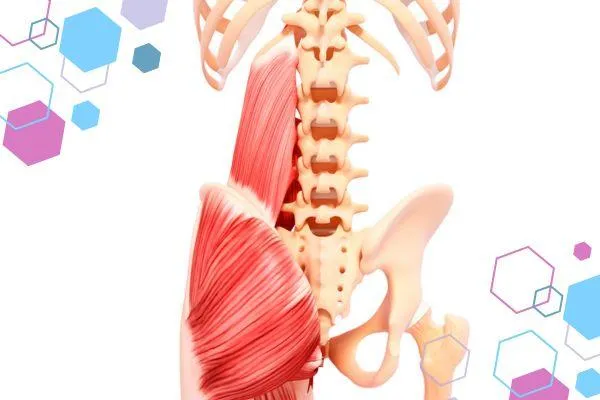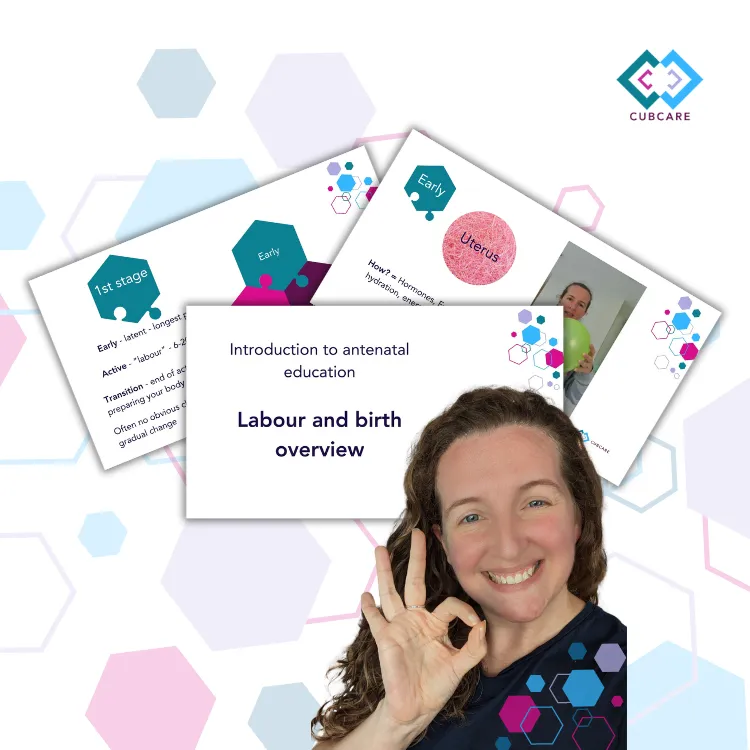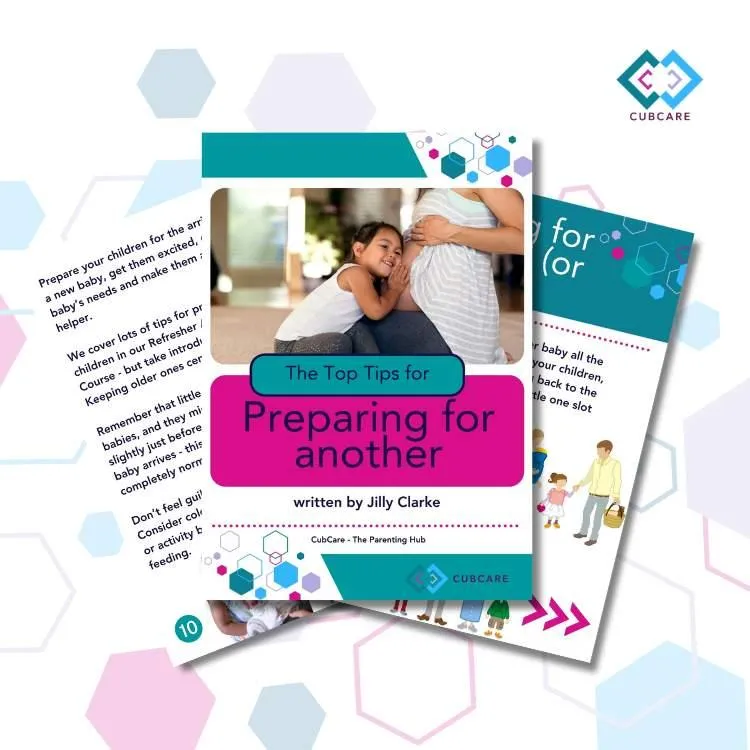We're an award winning Antenatal and Postnatal Education Platform 2025!
(read more here)
CubCare blogs.
From early pregnancy to newborn development.
Advice to help through pregnancy, birth and childhood.
BLOG

Release the Quadratus Lumborum (QL) Muscles for a More Comfortable Pregnancy and Birth
"That lower back pain you have in pregnancy? It might be tight Quadratus Lumborum (QL) muscles. Tight QL muscles can have far-reaching effects, from making everyday movement in pregnancy difficult, to complicating the birth process itself." - Jilly Clarke
What are the Quadratus Lumborum (QL) muscles? And how can we work them for a more comfortable pregnancy and birth?
During pregnancy, your body goes through an incredible transformation, with muscles and joints adapting to the growing weight of your baby. These muscles have a big impact on how you feel during pregnancy and will also affect your labour and birth experience.
One muscle group that tends to become tight during pregnancy is the Quadratus Lumborum (QL) muscles. These deep lower back muscles play a crucial role in supporting the spine, maintaining posture, and stabilizing the pelvis.
Let’s explore why the QL muscles are so important for pregnancy and birth, why they tend to get tight, how tightness can impact your comfort and birthing experience, and how to release and lengthen them for a more comfortable pregnancy and an easier birth.

What are the Quadratus Lumborum (QL) Muscles and why are they important in pregnancy?
The Quadratus Lumborum (QL) muscles are a pair of deep muscles located on either side of your lower spine. They stretch from the bottom of your ribs to the top of your pelvis and are involved in stabilizing the spine, supporting proper posture, and allowing side-bending movements. The QL muscles work closely with other deep core muscles, such as the psoas, to maintain pelvic stability and lower back support.
During pregnancy, these muscles take on extra strain as your centre of gravity shifts and your growing baby adds pressure to your lower back. While the QL muscles are vital for keeping your body upright and mobile, they are prone to becoming tight and uncomfortable during pregnancy. Whilst your uterus is growing, your pelvis getting more mobile and your main core muscles stretching, the QL muscles often take a lot of the strain. Tight QL muscles can have far-reaching effects, from making everyday movements difficult to complicating the birth process itself.
Why the QL Muscles Are Important for Pregnancy and Birth
The QL muscles play an essential role during pregnancy and birth by helping stabilize your lower back and pelvis. Here’s why their flexibility is crucial:
Support the Lower Back
The QL muscles help support the lower back, especially as the lumbar curve increases due to your growing bump. When the QL muscles are tight, they can lead to lower back pain and reduced spinal mobility, making everyday movements and maintaining good posture harder.
Maintain Pelvic Stability
The pelvis undergoes significant changes during pregnancy, both in shape and mobility. Your QL muscles work with your core to keep the pelvis level. Tight QL muscles can cause an uneven tilt in your pelvis, which may affect balance and cause discomfort. More importantly, this altered tilt can make it harder for your baby to engage with the pelvis during labour, which can affect their journey into the birth canal.
Impact on Baby’s Descent
When the QL muscles are tight, they can restrict the mobility of the pelvis, making it more difficult for your baby to properly engage with the pelvic inlet. The baby must move through several stages to descend into and navigate the birth canal, both in the build-up, and during birth. Tight QL muscles can prevent the optimal positioning of the pelvis, altering the angle or space available for your baby to enter. This can make birth more challenging, especially in the early stages of labour.
Tight QL and Psoas Connection
The QL muscles are closely related to the psoas muscles, which run from the lower spine to the inside of your hips. Tight QL muscles often indicate that the psoas muscles are tight as well. A tight psoas can further restrict the baby’s passage through the pelvis, as the psoas muscles influence pelvic positioning and movement. Tension in both the QL and psoas can lead to more pain and less mobility during labour, making it difficult for your baby to rotate and descend smoothly.
I have another blog on the psoas muscles and how important they are - read more here
Limited Movement in Labour
Movement in labour is important, to get into different positions to encourage the baby’s descent, making more room in your pelvis and making things easier. Tight QL muscles can reduce the ability for your hips and lower back to move, making it harder to move freely and adopt positions such as squatting, leaning forward, or opening the pelvis in ways that facilitate birth.
Why the QL Muscles Become Tight During Pregnancy
There are several reasons why the QL muscles tend to become tight during pregnancy:
Postural Changes
As your baby grows, your posture shifts. The increased curve in the lower back (lordosis) places additional strain on the QL muscles, causing them to overwork and tighten.
Pelvic Imbalance
Many studies show that many people (up to 82% of females) have some form of pelvic tilt – that is, the standard position of the pelvis isn’t balanced and is tilting either forward or backwards. Many people will have pelvic imbalances due to the differences in movement patterns between out dominant and non-dominant sides. Coupled with our tendency to carry bags, sit and move in unbalanced ways, this can cause tension, pain and discomfort especially in pregnancy. The hormone relaxin also loosens ligaments, which can destabilize the pelvis further in pregnancy. The QL muscles compensate by working harder to stabilize the lower back and hips, leading to tightness.
Rib Compression and Restricted Breathing
As your bump grows, space for the diaphragm becomes limited, leading to shallow breathing. This rib compression can tighten the muscles around your ribs, including the QL. Tight QL muscles contribute to more rib tightness, making it difficult to breathe deeply, which is essential for staying relaxed during labour.
Lack of Movement
Fatigue or discomfort during pregnancy may lead to less movement, causing the QL muscles to shorten and tighten. Regular movement and stretching are essential to keep them flexible and pain-free.

Symptoms of Tight QL Muscles During Pregnancy
Tight QL muscles can cause a range of discomforts during pregnancy, including:
Lower Back Pain
Lower back pain is the most common symptom of tight QL muscles in pregnancy. You may feel pain on one or both sides of your lower back, which can worsen after prolonged sitting or standing. Because tight QL muscles can pull the back of the pelvis up, this can result in pelvic discomfort during pregnancy too.
Pelvic Discomfort
Tight QL muscles in pregnancy can pull on the back of the pelvis, leading to pain or discomfort in the hips, pelvis, or even an uneven pelvic tilt, making walking uncomfortable.
Difficulty Moving or Bending
Tightness in the QL muscles, particularly as the body changes during pregnancy, can make it harder to bend to the side, rotate your torso, or even stand for long periods. This can hinder everyday movement and birthing positions.
Rib Tightness and Restricted Breathing
Your ribs need to move and be adaptable to change during pregnancy, and your breathing is restricted by baby as they grow. Tension in the QL muscles can further affect your ability to breathe deeply, as they can pull on your ribs, causing tightness in your chest and diaphragm.
Referral Pain
Tight QL muscles can cause pain to radiate to other areas like the hips, glutes, or down the legs, mimicking sciatica.
How to Lengthen and Release Tight QL Muscles
Here are some effective ways to release and lengthen tight QL muscles, particularly during pregnancy. Easing tension and promoting flexibility of movement (not flexibility of the joints!):
Side Bends
Stand with feet hip-width apart. Or you can do this sitting.
Reach one arm overhead and slowly bend your torso to the opposite side.
Hold for 20-30 seconds, then switch sides.
This stretch lengthens the QL muscles, alleviating tightness.
Child’s Pose with Side Stretch
Kneel on the floor with knees wide apart, toes together.
Reach your arms forward into child’s pose.
Walk your hands to one side to stretch the opposite QL.
Hold for up to 30 seconds, then switch sides.
Abdominal Breathing to Release Rib Tension
Shallow breathing caused by tight QL muscles can increase discomfort in your ribs. Abdominal breathing helps relax both your QL and psoas muscles.
Sit comfortably.
Place one hand on your chest and the other on your abdomen.
Breathe deeply, letting your abdomen rise while keeping your chest still.
Exhale slowly.
Repeat for several minutes to stretch your diaphragm and relieve rib tension.
Then place your hands around your ribcage at each side and breathing into your hands to feel them move out the way.
Again, repeat this for several minutes.
Pelvic Tilts
Kneel upright, or this can even be done in all 4s.
Inhale and, as you exhale, gently tilt your pelvis upward, flattening your lower back against the wall
Inhale to release. Pelvic tilts mobilize the lower back and ease QL tightness.
Prenatal Yoga or Pilates
These gentle classes focus on stretches that release tension in your lower back, ribs, and hips. Regular practice can prevent QL tightness and enhance pelvic mobility.
Massage and Foam Rolling
Prenatal massage or foam rolling can target the lower back, QL, and psoas muscles, easing tightness and improving pelvic alignment.
The Importance of Releasing Your QL Muscles for Birth
Tight QL muscles can create discomfort during pregnancy and complicate the birthing process by altering your pelvic tilt and restricting movement. This tightness can also affect the psoas muscles, making it more difficult for your baby to engage in the pelvis and move through the birth canal. By regularly stretching and releasing tension in the QL muscles, you can improve your comfort during pregnancy and facilitate an easier, more mobile labour.
Incorporating stretches, abdominal breathing, and movement into your routine not only reduces discomfort but also prepares your body for birth by improving pelvic mobility and spinal alignment. Pay attention to your body’s signals and give yourself the time to release any tension that builds up as your pregnancy progresses.
At CubCare, we’re here to support you through every stage of pregnancy, labour, and beyond. Whether you’re just curious or preparing for the big day, we’ve got your back (and belly!).
Learning how to relax during the pregnancy so that you are ready when the big day comes is vital. A relaxed body does not secrete adrenaline, and allows the endorphins and oxytocin to flow.
Remember, our bodies are SO capable. With the trust, the knowledge and the education you CAN have an amazing birth experience.
That's why we have our Antenatal Course (both in person and online), Refresher Antenatal Course (both in person and online), and our Birth Partner course so that everybody can get knowledgeable and confident for birth.
Refresher Antenatal Course in person
Refresher Antenatal Course online
Birth Partner course (included in our Antenatal course)
Antenatal Course in person
Antenatal Course online
Easily navigate to our most popular Blog categories
Download our Freebies

Labour and Birth
Watch our introduction to antenatal education webinar, our labour and birth overview - to start your antenatal education journey. Understanding the process, and what you can do to influence it.

Pregnancy Planner
Free Pregnancy Planner to help you prepare for a little one. Prepare your body, your mind, your finances and your home. Get organised, feel good and prepare for an active, positive birth.

Birth Partner Guide
Your ultimate guide to being the best birth partner during pregnancy, birth and recovery. Learn what you need to do, and what you need to learn to be the best birth partner possible.

Expecting Again Guide
Your ultimate guide to preparing for another birth and an extra baby. Our top tips for navigating pregnancy and birth, and helping your older ones to transition into their new role as a big sibling.
Based in Welwyn Hatfield, offering local pregnancy support and doula services across Hertfordshire: St Albans, Hatfield, Welwyn Garden City, Potters Bar, Stevenage, Harpenden, Hitchin, Barnet, Mill Hill and surrounding areas.
Online antenatal and postnatal education available UK-wide.
© Copyright 2025 CubCare The Parenting Hub. CubCare is operated by The Birth and Baby Company Ltd. Company No. 15655287
Privacy Policy | Terms & Conditions | Medical Disclaimer | Inclusivity and Accessibility

